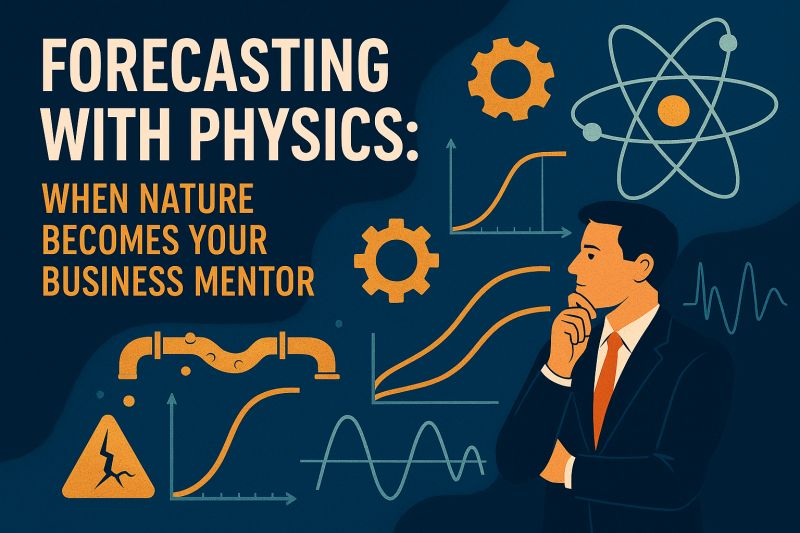Physics in Forecasting: When Nature Becomes Your Mentor
Most businesses forecast by stretching the past into the future. It works fine—until the world throws a curveball.
A pandemic. A supply chain shock. A product launch that spreads like wildfire.
That’s when physics quietly raises its hand.
Physics doesn’t care about quarterly targets. It cares about rules: flow, decay, diffusion, fatigue. And those rules turn out to explain a lot of business uncertainty.
Example 1: Supply Chain Bottlenecks
Think of your supply chain as pipes carrying water.
- Weekly demand = 10,000 units
- System capacity = 8,000 units/week
Physics-style flow models show a shortfall of 2,000 units/week, or 24,000 units lost per quarter.
At ₹500 per unit, that’s ₹12 crore in lost revenue not because demand wasn’t forecast, but because the system physically couldn’t keep up.
Forecasting only with past demand trends misses the point; physics shows you where the pipes burst.
Example 2: Marketing Adoption
Customer adoption of a new product doesn’t follow a neat line, it mirrors heat diffusion.
- Early adoption may crawl at 2% per month.
- Then suddenly accelerate to 20% once “heat” spreads.
Physics-based diffusion models anticipate that inflection point, while purely statistical models often catch it only after the spike.
The lesson: adoption spreads like heat, not like history.
Example 3: Machine Wear
A turbine bearing doesn’t “fail randomly.” It follows material stress laws.
- After 10,000 load cycles, fatigue begins to accelerate.
- Physics-based models can forecast failure windows within ±5%.
The result? Millions saved in unplanned downtime, and maintenance scheduled by science, not by guesswork.
Example 4: Energy Forecasting
Power demand during summer isn’t just about “past consumption.”
It follows thermodynamic equations tied to temperature rise. That’s why physics-based models often outperform black-box ML during heatwaves, when history has no precedent.
When the environment changes faster than your dataset, physics keeps you grounded.
The Point
Physics-based forecasting isn’t about replacing machine learning or statistics. It’s about anchoring forecasts in rules that don’t break when history does.
- It turns “trend guessing” into system mapping.
- It makes forecasts explainable to both engineers and executives.
- And most importantly, it keeps your business compass pointing north when the terrain suddenly changes
Because when history fails, physics still works.
At ResEt AI, this is more than a philosophy, it’s practice.
On our SIA platform, we’ve implemented physics-based forecasting for one of our clients, giving them foresight not just from numbers, but from nature itself.
